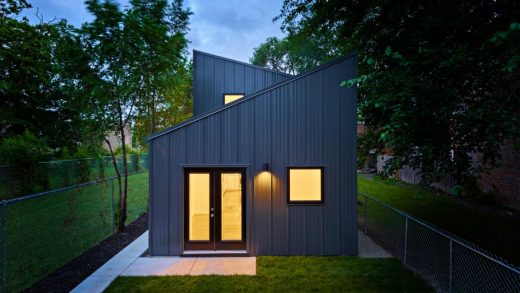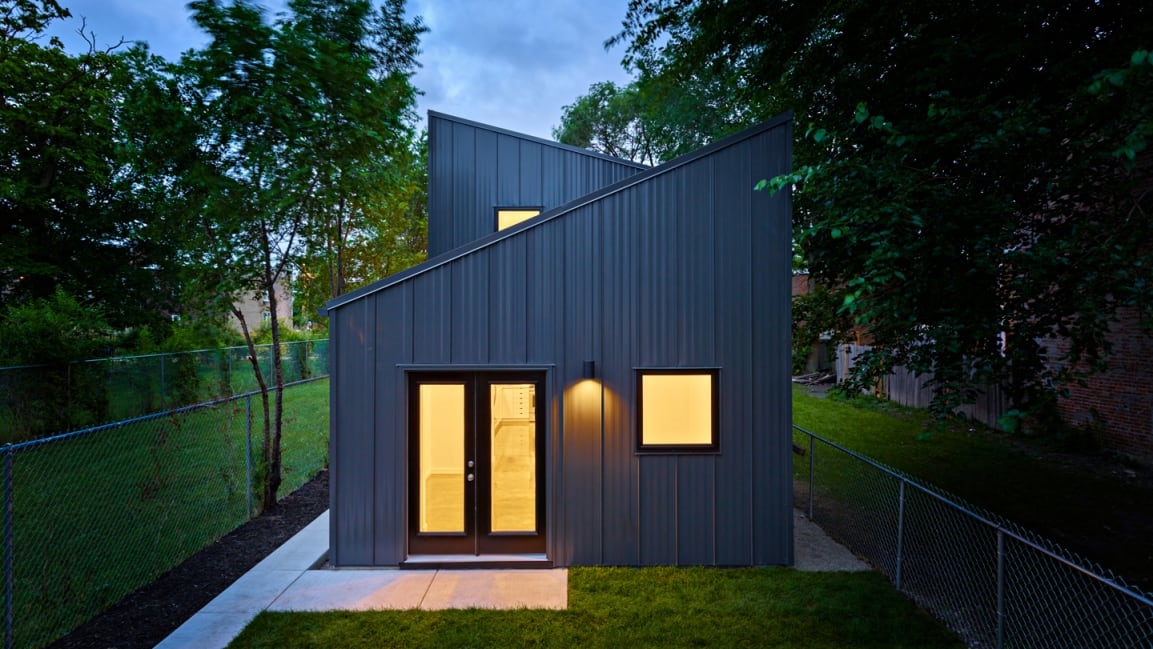The middle class is being crushed by the housing crisis—and a solution is hiding in plain sight
On a block sprinkled with vacant lots in Chicago’s East Garfield Park neighborhood, a new piece of modern architecture has made the unlikely jump from design exercise to built project. The angular blue-gray house, a bold accent in a neighborhood of traditional homes, started as what architect Craig Reschke calls “design calisthenics.”
With Ann Lui, his partner at the Chicago-based architecture studio Future Firm, Reschke began toying around with a hypothetical design for a two-bedroom single-family house, with contemporary rooflines and airy, spacious interiors. There was no client or site, but there were a few conditions the architects knew they could design around. One was the commonly sized 125-by-25-foot residential lot that’s ubiquitous across Chicago. The other was the dearth of contemporary housing that was neither luxury nor affordable but rather built to sell to the middle of the housing market.
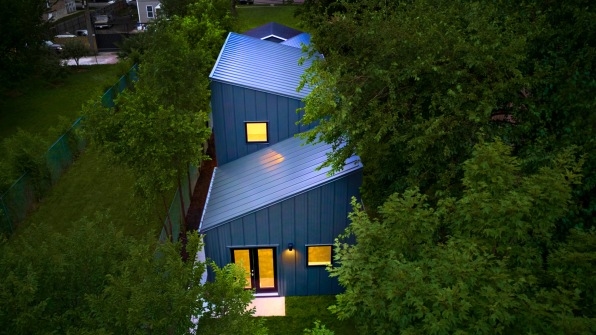
Reschke and Lui showed the design to a local developer, Joseph Root, to get his take. He saw a project that needed to be built.
“We see a lot of home builders that want to build on the luxury side, million-dollar-plus homes. And then there’s affordable developers,” says Root. “When I looked at the numbers, I said this is a great opportunity to meet the middle.”
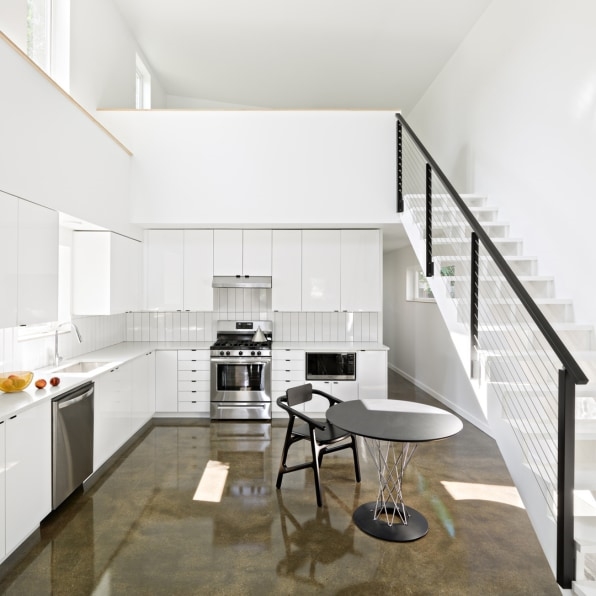
The architects and developer joined forces to build the project. They brought the concept to the Cook County Land Bank Authority, which sold them a long-vacant plot of land for $13,000, far below market rate. After about eight months of construction, the home was listed in July for $399,000. It sold within four days. (They declined to disclose the project’s total budget.)
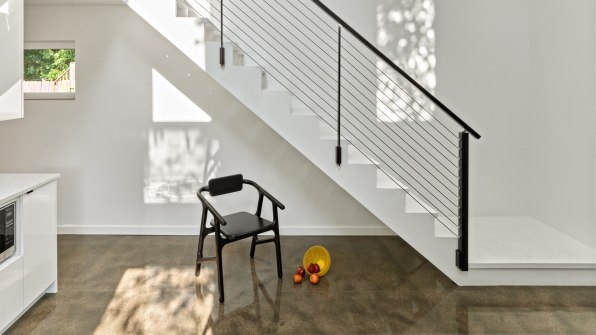
The 1,300-square-foot house is an example of what many urban planners and housing advocates call “missing middle housing”—homes designed for middle class buyers who are often ignored by nonprofit developers using subsidies to provide much-needed affordable housing and private developers maximizing their profits by building homes for the wealthy.
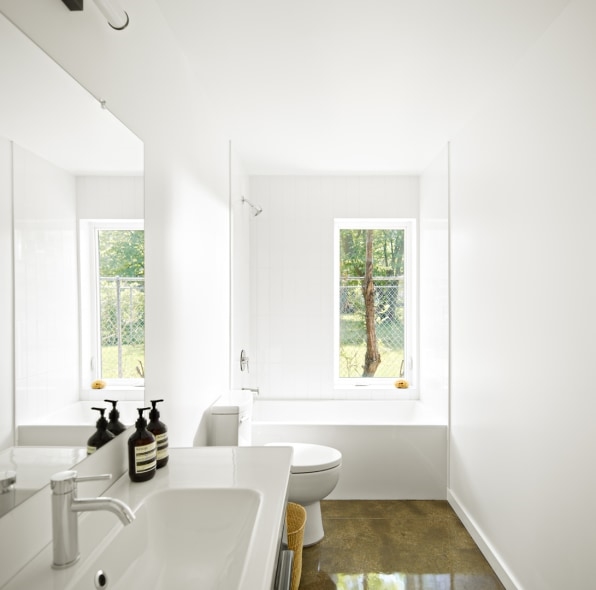
The home diverges from the typical brick or timber-framed homes in Chicago. Clad in blue metal siding more commonly used on agricultural buildings, the home has a zigzag roofline that creates a variety of ceiling heights and volumes inside the home. Built without a basement, the home sits flat on the ground, making it accessible to those with limited mobility. And it was designed to be slightly more narrow than the typical Chicago home—16 feet instead of 20—which squeezed the home but also allowed more light to come in on its side and created space for a small side yard. “It doesn’t try to blend in,” says Lui.
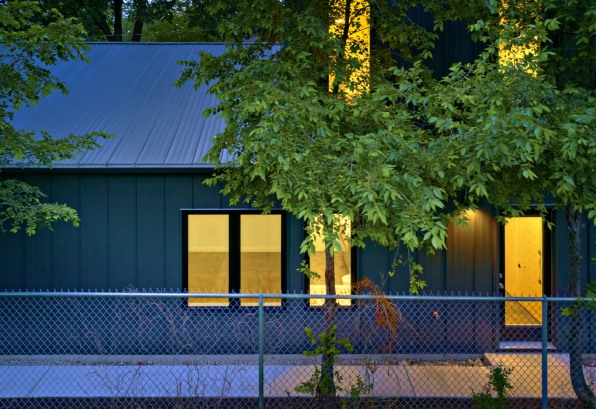
But these design choices weren’t really about distinguishing the house’s design. “All that made it very simple to build and execute, which brought down the price,” says Reschke.
It’s a design that Reschke, Lui, and Root believe is replicable, and they’ve got two more projects in the works to prove it, also planned for vacant lots purchased from the Cook County Land Bank. The first of these new homes will likely be about the same size and price as the initial development, and Reschke says Future Firm is using the initial design to provide a basis for how the second and third versions get built. “We have this idea of reworking it into a series or a family,” he says, with a smaller two-bedroom version, a larger four-bedroom version, and a two-flat duplex. Architecturally, they’re similar to other one-off contemporary homes Future Firm has designed. By sharing the cost-cutting design and construction approaches of the initial home, the next iterations aim to streamline the process and bring costs even lower. “If we can do multiples, then the numbers start to work better on the financial side as well.”
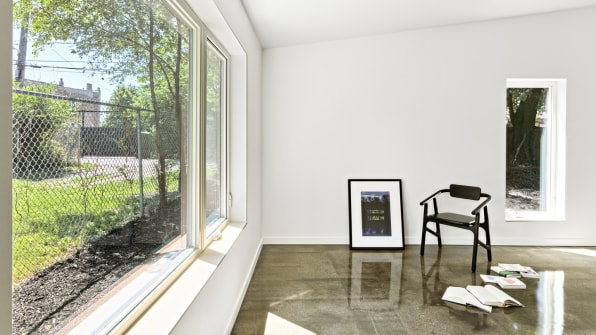
Scaling up will help bring the overall cost down, ensuring that the homes are able to be built at a price that’s accessible to those making middle-class incomes. “One of the ambitions of the project is to contribute to more equitable and thriving cities overall. If we only look at the bottom line for a single home, it is challenging to make the equation work,” says Lui.
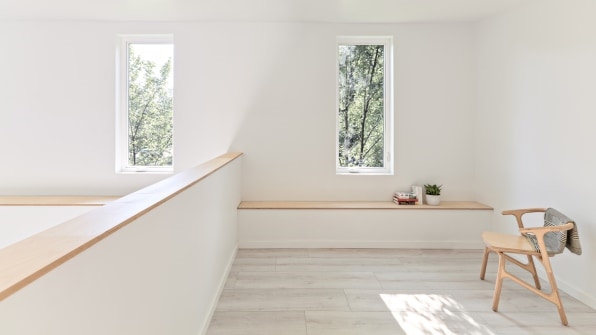
Reschke compares the planned series of homes to another kind of design product. “I think about the house a little bit like Nike shoes,” he says. “They’re design-forward, they’re priced at a point that’s not the cheapest thing on the market but also at a point where everyone can participate. And because they are selling many of them, they achieve that scale.”
Root, the developer, sees this missing middle housing as a growing business opportunity, and this initial design as a case study for how he and other developers and designers can start to fill in the supply.
“We need more scale to make this sustainable, but I think we have a lot of the pieces to the puzzle to keep this going to build across Chicago and maybe someday in other cities,” he says.
(28)

